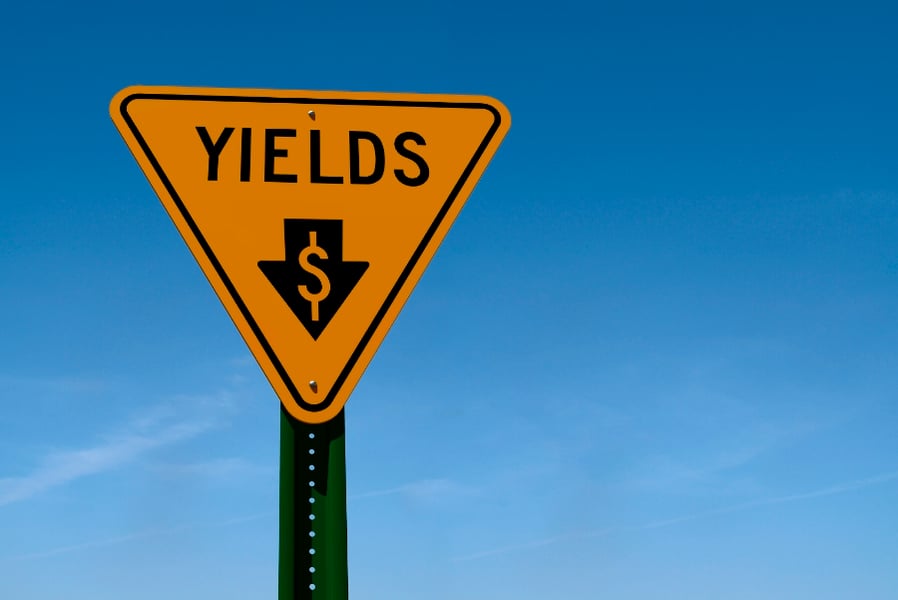The way many retired investors think about the yield of their investment portfolios is complicated and puzzling. Too often, they blur the distinction between yield as an investment characteristic and yield as a source of income for retirement spending. My conversations with hundreds of financial advisers and end investors over the past few years have taught me that there is a peculiar psychology of yield. Unfortunately, this psychology can be dangerous when it overshadows sound investment thinking.
What creates the psychology of yield?
One cause of this curious perspective on yield is the old adage: “Never invade principal.” The natural fear of running out of money in old age demands a reliable solution. If you only spend the income from a portfolio, you'll leave your nest egg intact and never run out of money in old age, right?
This may have been true in the good old days when investors stuck to CDs, conservative bonds or a collection of stable blue chip stocks offering moderate yields. However, with current yields at historical lows, investors are confronted with unsatisfying incomes from these traditional investments. For this reason, we've observed investors more and more chasing yield.
(More: Beyond the Fed's (all but certain) rate hike)
What are the consequences of irresponsible yield?
Chasing yield can lead investors to concentrate their portfolios into those asset classes, sectors and securities that supposedly offer higher yields. But those yields can come with additional risks. Investors also need to keep in mind another old adage: “There's no such thing as a free lunch.”
Many investors understand the basic trade-off between investment risk and reward. However, all too often the psychology of yield disrupts this understanding. Many times, investors seek yield while ignoring the total return of their investment, as if it doesn't matter as long as they don't sell any part of their portfolio.
This may be sensible when considering U.S. Treasuries, but it's not so sensible for a collection of dividend-paying stocks or high-yield bonds. Dividend-paying stocks are still subject to market volatility, and bonds — especially high-yield bonds — don't always pay investors back. Don't forget that high-yield bonds are sometimes referred to as “junk bonds” and generally pay higher yields in order to compensate investors for a higher risk of issuer default.
Consider the current yields versus the worst one-year returns from October 1995 to September 2015 for a few asset classes that yield-seeking investors may use in their portfolios:
| Asset Class |
Current Yield (Sept. 30, 2015) |
Worst 1-year Return |
| U.S. Treasuries (Source: Barclays U.S. Treasury Index) |
1.4% |
-1.8% |
| Aggregate Bonds (Source: Barclays U.S. Aggregate Bond Index) |
2.3% |
-3.7% |
| Global REITs (Source: FTSE EPRA/NAREIT Global Developed Index) |
3.8% |
-59.9% |
| Global High Yield Bonds (Source: Barclays Global High Yield Index) |
7.9% |
-32.8% |
| MLPs (Source: Alerian MLP Index) |
6.7% |
-39.2% |
Investors shouldn't necessarily avoid these last three asset classes, even with such painful downsides. They just need to be careful when deciding how much to allocate to any one of them, while keeping in mind their specific risk tolerance. Despite the lure of yield, investors can't escape the reality of this equation:
Total Return = Interest + Dividends + Capital Appreciation (or – Capital Losses!)
If an investor's $500,000 portfolio has a 5% yield, but a return of -7% during a year, they didn't really earn $25,000 that year even if they got a check for that amount. The portfolio earned $25,000 in income and lost $60,000 in value, leaving them $35,000 poorer overall. That 5% yield is an optical illusion. It's like somebody who owes you $5 and asks for a ten-spot so they can pay you back.
How can investors manage yield responsibly?
Investors should always keep in mind that the income from a security must come from the underlying business of the security's issuer. Whether it's an interest payment from a bond or a dividend from a stock, the company behind the security has to earn enough revenue to first pay its bills and then pay you. And depending on the specific security type you own, there may be many others in line ahead of you. Remember, higher yields generally are tied to higher-risk investments.
The point is that retired investors need to keep investment decisions distinct from decisions about how to replace their pre-retirement work income.
If investors are committed to a yield-focused investing approach, they should pursue it responsibly. They should pay attention to how much yield the current market environment can reasonably deliver (i.e., seek a responsible level of yield). They also should pay attention to the portfolio risks they are carrying (i.e., be mindful of the source of their yield).
Practically speaking, that means adhering to three principles: 1) balancing a portfolio to seek both current income and long-term growth to help support future income; 2) accessing the expertise of skilled investment professionals who understand the rewards and risks of different yield strategies; and 3) adapting to the changing risks and opportunities in markets through time.
Phill Rogerson is managing director of consulting and product for Russell Investments' U.S. adviser-sold business.







